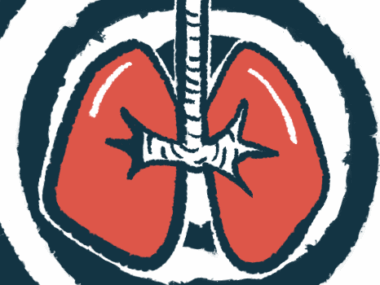CF treatment Kaftrio improves lung function: Danish study
Benefits seen across range of ages, treatment histories
Written by |

Cystic fibrosis (CF) patients saw improved lung function after one year of treatment with Kaftrio, sold as Trikafta in the U.S., a study found.
The benefits were seen regardless of age, disease severity, or prior CFTR modulator treatment.
“Using high-resolution data from a nationwide real-world setting, our study documents the impact of [Kaftrio] on lung function across subgroups based on age, disease severity and treatment history,” the researchers wrote. The study, “Lung function improvement on triple modulators: high-resolution, nationwide data from the Danish Cystic Fibrosis Cohort,” was published in ERJ Open Research.
CF is caused by mutations in the gene CFTR, which provides instructions to make the CFTR protein. In healthy people, this protein regulates the flow of water and chloride in and out of cells.
The defective or absent CTFR protein causes the body to make unusually thick and sticky mucus. This mucus builds up in organs and is a fertile breeding ground for bacteria in the lungs. As a result, many CF patients experience recurrent lung infections and breathing difficulties.
CF treatment boosts protein function
Kaftrio is an oral medication that contains three CFTR modulators — ivacaftor, tezacaftor, and elexacaftor — that can boost the functionality of the defective protein in people with specific CFTR mutations. Improving the protein’s function allows for more normal mucus production and may ease inflammation and tissue damage in patients’ lungs.
The researchers studied 392 people with cystic fibrosis living in Denmark who were treated with Kaftrio to see how the treatment impacted lung function and lung disease progression. Participants ranged in age from 14 to 32. Some 92% of patients completed the one-year observation period.
The study looked at 4,949 spirometry test sessions, which assess lung function by measuring how much air someone can forcibly exhale in a breath or set amount of time.
The researchers measured patients’ predicted forced expiratory volume (ppFEV1), which quantifies how much air a person can forcefully exhale in one second as a percentage of what is considered normal for their age, sex, height, and ethnicity. Higher percentages signify better lung function.
Before beginning Kaftrio, patients had a mean ppFEV1 of 78.3. Over one year of treatment, that increased by 13.
The increase in ppFEV1 was 12.1 for CF patients who had been treated with other CTFR modulators and 15.1 for those who had not previously been treated with CTFR modulators. Similar improvements were seen regardless of age or initial lung disease severity, with a ppFEV1 improvement of 8 in patients who started with normal lung function.
“The large benefits of [Kaftrio] among people with CF with mild and moderate lung disease highlights the potential for good outcomes in those with less irreversible tissue damage, and room for improvement before reaching their physiological ceiling for lung function,” the researchers wrote.
The annual rate of change in spirometry parameters showed that improvements in lung function were sustained during the first year of Kaftrio treatment.
“These findings underscore that [Kaftrio] not only halts the progressive loss of lung function that has been a hallmark of CF disease, but also leads to a continuing improvement in all spirometry outcomes over the first year, especially among people with CF with severe lung disease at treatment initiation,” the researchers wrote.
Results also indicated a substantial drop in peripheral airway obstruction and larger total lung volume after Kaftrio treatment.
This increase in total lung volume was “a sign of greater accessibility to the more peripheral parts of the lungs, possibly due to better mucus clearance,” the scientists wrote.
“Longer-term studies will be essential for following these trends and assessing the impact of CFTR modulator therapy on CF lung disease,” they wrote.







